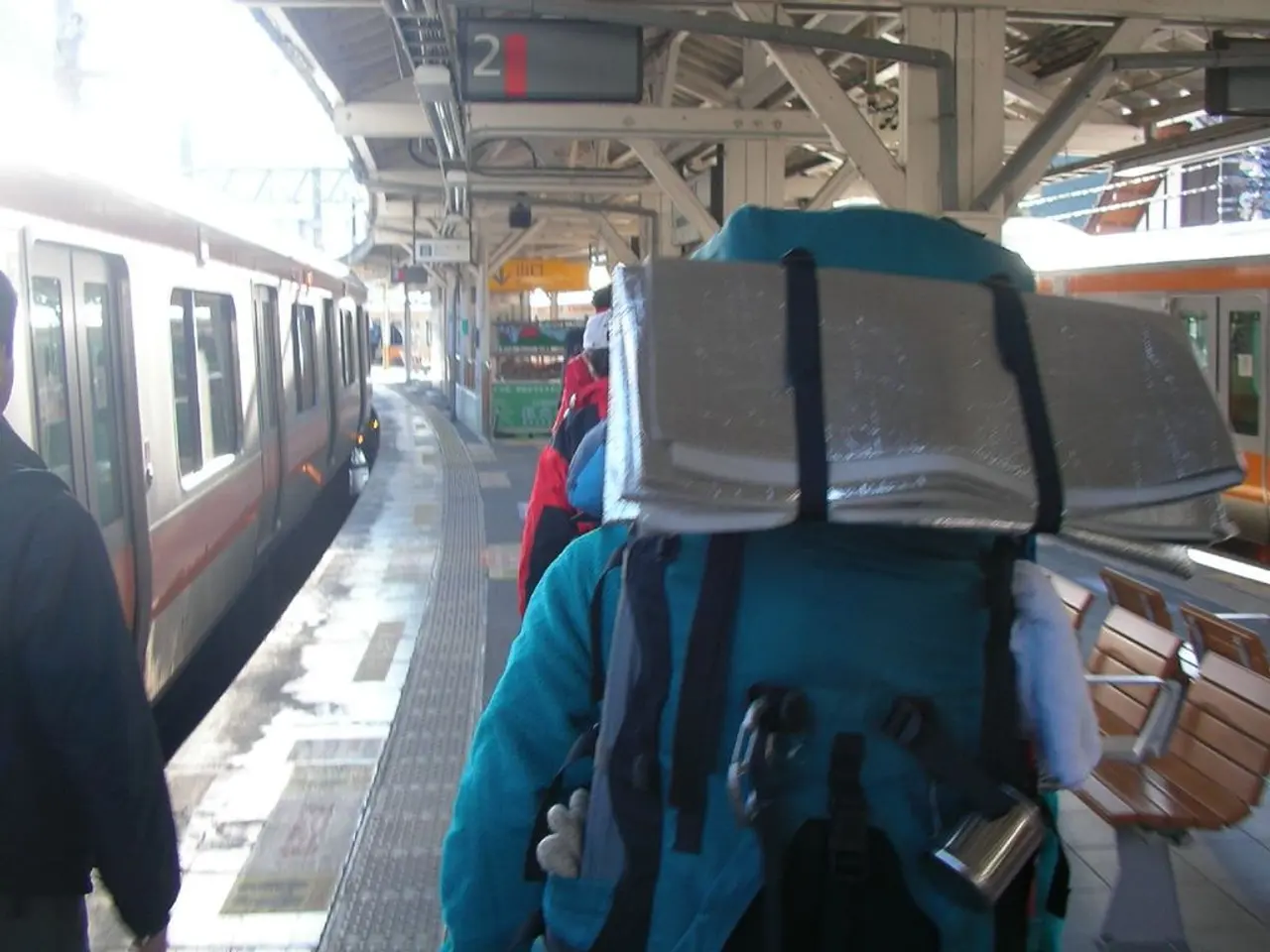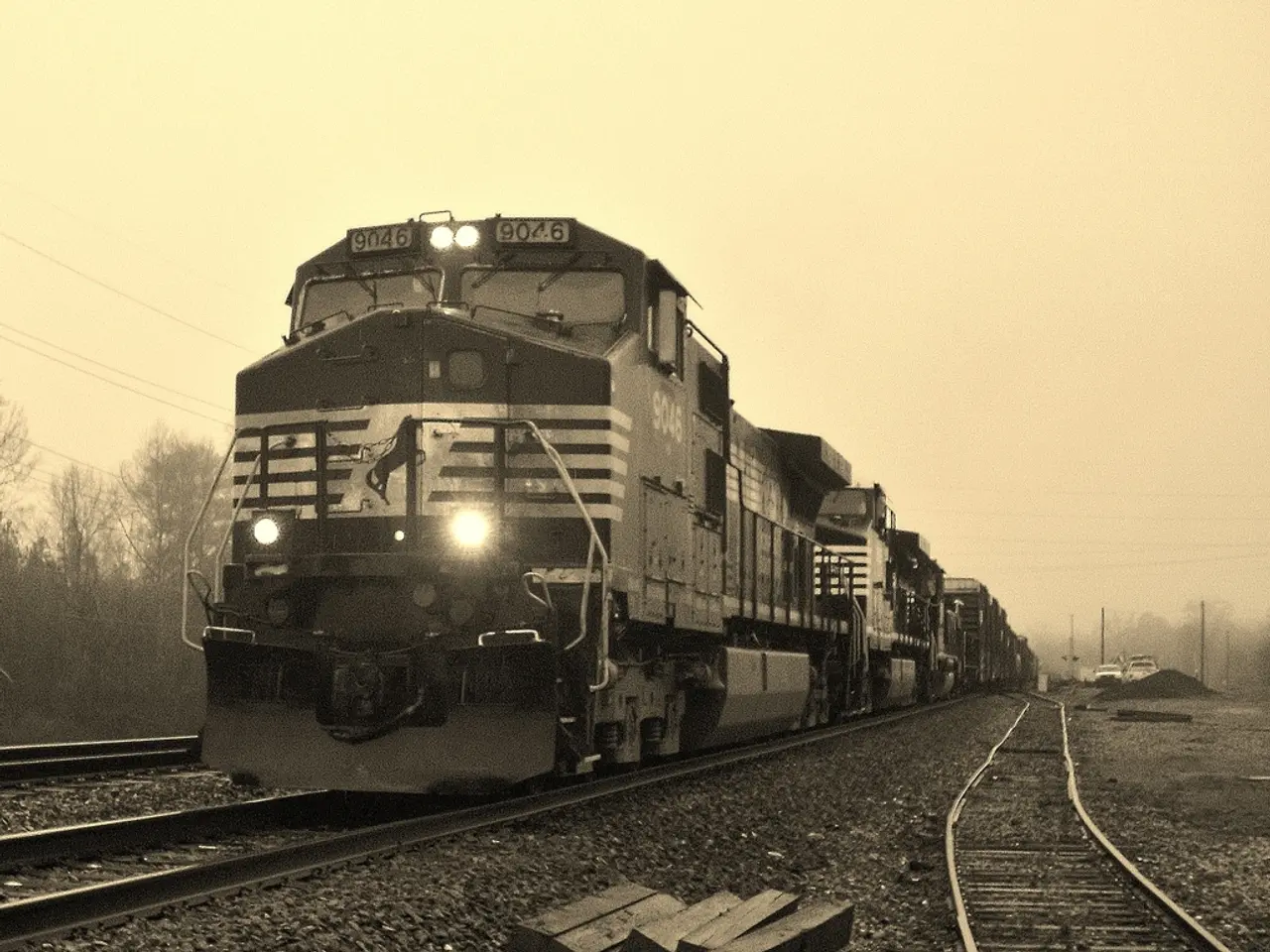German Rail: Modernizing for the Future - A Comprehensive Overhaul
Deutsche Bahn asserts no seat cancellations have occurred.
It's rumored that German Rail is pulling thousands of seats across its long-distance trains, but the truth is quite different. The company asserts that it is actually increasing available seats.
According to a strategy aimed at modernizing and upgrading the fleet, German Rail ambitions to boost seat offerings in the long-distance sector in the coming years. Exactly how many seats will be added remains undetermined. However, the goal is to "refresh and modernize the fleet to stabilize operations," as stated by the company.
Thursday evening saw a response from the state-owned transport company to a report by "Der Spiegel" citing plans to remove 21,000 seats in long-distance traffic. German Rail clarified their stance: "German Rail does not plan to remove 21,000 seats in long-distance traffic. Correct is: The number of seats available to our passengers will increase by 2036."
A closer examination of the report from "Der Spiegel" reveals that they allegedly analyzed a "strictly confidential" company document. This document reportedly details plans to decrease the number of seats in long-distance traffic from the current 265,000 to 244,000 by 2036. This would mean losing 23,000 of the 55,000 seats in older Intercity trains (IC), while the ICE fleet would gain 2,000 in the same period. In the future, ICE trains would also operate on routes currently served by IC trains.
However, it's important to note that the numbers mentioned by "Der Spiegel" refer to seats in the existing fleet, including those in older Intercity trains that are rarely used. The strategy involves consistently phasing out older and faulty vehicles. "Older trains require more maintenance downtime and are not available to passengers." German Rail reiterated its commitment to a nationwide transport offering and does not intend to withdraw from nationwide transport.
Modernizing the Infrastructure: Stations, Signaling, and Rolling Stock
German Rail's modernization plan goes beyond merely replacing rolling stock. With a significant government investment of €150 billion in total, the S3 restructuring program plans to upgrade 100 stations annually through 2027. The improvements focus on modernizing the stations, making them more efficient, accessible, and equipped with up-to-date technology.
To ensure smoother and more reliable operations, the plan involves replacing 200 outdated interlocking systems and installing digital signaling across 1,890 units, mainly through the use of the European Train Control System (ETCS) technology. This upgrade is expected to make rail operations more punctual and reliable.
On major routes such as Hamburg–Berlin, German Rail is undertaking complete nine-month closures for concentrated track and switch renewal, plus station improvements along the line. This work is intended to increase reliability and, once completed, should allow for smoother, more frequent, and potentially longer trains. This change could lead to increased seat offerings as well.
The Future of German Rail: New Trains and Increased Flexibility
While the focus of recent public announcements is on infrastructure and stations, German Rail has also been gradually introducing new ICE and IC trainsets, such as the ICE 4 and upcoming ICE 3neo, which typically offer higher passenger capacities, improved comfort, and greater energy efficiency compared to older models.
Indirectly, with infrastructure upgrades, more reliable and punctual operations, and new signaling, German Rail can better utilize its newer, larger rolling stock, leading to increased seat offerings over time, despite no explicit, aggressive phase-out plans for older trains being highlighted in current strategies.
In summary, German Rail's modernization strategy involves a holistic approach: upgrading infrastructure and stations to enable more reliable, flexible, and higher-capacity train operations, with rolling stock renewal as a parallel, ongoing process.
| Aspect | Planned Actions/Upgrades | Impact on Seat Offerings ||-----------------------|---------------------------------------------------------------|----------------------------------|| Stations | Modernized, barrier-free, tech-equipped | Improved flow, comfort, capacity || Infrastructure | Track, switch, and signaling upgrades | More reliable, flexible service || Rolling Stock | Gradual introduction of ICE 4, ICE 3neo | Higher capacity, comfort || Long-Distance Traffic | Major line overhauls (e.g., Hamburg–Berlin) | Potential for more/longer trains |
The ultimate goal is to make rail transport more attractive and reliable. German Rail remains committed to a nationwide transport offering while consistently modernizing and upgrading its fleet and infrastructure.
- The employment policy of German Rail might involve the introduction and phase-out of various rolling stock, such as the ICE 4 and ICE 3neo, which would require employment in manufacturing, maintenance, and operations within the automotive industry.
- In parallel with the modernization of infrastructure and stations, the finance policy of German Rail could potentially be impacted by large-scale investments, such as the €150 billion S3 restructuring program, which might influence transportation and logistics within the industry.




